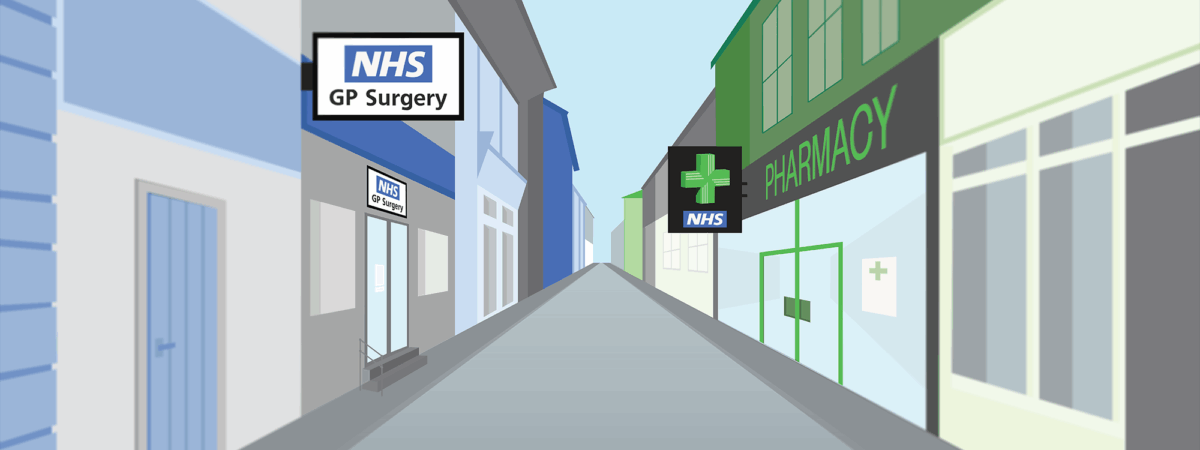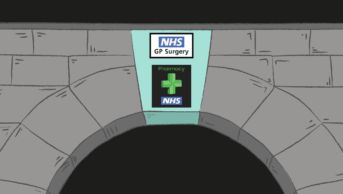In April 2025, low take-up of the Pharmacy First clinical pathways meant that just under one in four pharmacies in England received the £1,000 monthly payment associated with the service.
According to the latest data from NHS Business Services Authority (NHSBSA), only 4,010 pharmacies — 39% of the network in England — delivered the 30 consultations then required to unlock the monthly fixed payment for the funding.
Only one integrated care board (ICB) saw more than half of its pharmacies meet the threshold.
MPs have acknowledged the issue in parliament, with Caroline Voaden, Liberal Democrat MP for South Devon, highlighting on 17 June 2025 that “the current funding model does not take into account the lower footfall and limited referral rates that are common in rural areas”.
Pharmacy minister Stephen Kinnock agreed, saying the financial arrangements for Pharmacy First as it was first set up “were not working” and “need to be set at a level that incentivises pharmacists”.
And while an interim £500 payment for 20–29 clinical pathways — introduced since June 2025 — may go some way to relieve financial concerns, exclusive data obtained by The Pharmaceutical Journal highlight the need for more GP referrals to the service.
Regional variation in Pharmacy First
Using the latest data from the NHSBSA, The Pharmaceutical Journal calculated the percentage of pharmacies in each ICB that delivered the 30 clinical pathway consultations required for the £1,000 monthly payment in March (see Figure 1).
Box: What is a completed clinical pathway consultation?
A ‘completed clinical pathway consultation’ must meet certain criteria within the patient group directions for one of the Pharmacy First clinical pathways:
- Acute otitis media in children aged 1–17 years (in-person consultations only);
- Impetigo in people aged 1 year and over;
- Infected insect bites in people aged 1 year and over;
- Shingles in adults aged 18 years and over;
- Sore throat in patients aged 5 years and over;
- Uncomplicated urinary tract infections in women aged 16–64 years.
Eligible patients who might otherwise have seen a GP can be referred to these clinical pathways.
GPs are also encouraged to refer other conditions to Pharmacy First through the minor ailments pathway — previously commissioned as the ‘Community pharmacist consultation scheme’ — but these do not count towards each pharmacy’s threshold for the monthly payment.
To address challenges around payment for the service, a new tiered payment model was introduced from 1 June 2025. Under the revised structure, pharmacies delivering 20–29 clinical pathway consultations per month can now receive £500, in addition to £17 per consultation.
Those who continue to meet or exceed the 30-consultation threshold remain eligible for the maximum £1,000 monthly payment.
The Pharmaceutical Journal has also obtained exclusive data through a Freedom of Information (FOI) request that reveal the proportion of these clinical pathway consultations that were driven by GP referrals to the service.
The data reveal a huge variation in GP referrals across England (see Figure 2).
In North Central London, Amalin Dutt, a pharmacist who also provides contractor support for Community Pharmacy Middlesex, believes stronger GP engagement is critical for the success of the service.
“GP practices can really help by saying to the patient: ‘OK, you’ve presented today with what seems to be a urinary tract infection. The community pharmacy can help you with that now, and we are therefore suggesting that we ideally refer you to the community pharmacy in order for that condition to be treated’,” he says.
Dutt suggests that GPs should be supported, incentivised and perhaps even reimbursed to make referrals to Pharmacy First. This could help overcome barriers such as the time taken to make a referral, or challenges around interoperability between pharmacy IT systems and GP systems.
Olivier Picard, who owns and operates four pharmacies in the south east of England, agrees. “Some GPs don’t want to refer because they see [minor ailments] as what they do,” he says, adding that this is “frustrating” knowing how much pressure GPs are under.
Picard gives a telling example, explaining that in one recent week, he dispensed seven prescriptions for nitrofurantoin — an antibiotic used to treat uncomplicated urinary tract infections (UTIs) — but conducted just one UTI consultation under Pharmacy First for a patient who came into the pharmacy directly.
“If the patient’s first port of call is to call the GP when they wake up unwell at 8am, then if the surgery doesn’t refer the patient or remind [them] of Pharmacy First and continues to offer appointments because it’s easier that way, that patient is never going to change the way they operate,” Picard says.
When approached for comment by The Pharmaceutical Journal, the Department of Health and Social Care (DHSC) acknowledged that there were regional differences in GP engagement with Pharmacy First, with some areas performing better than others.
The DHSC also confirmed that to help increase uptake, NHS England was working closely with ICBs, GP stakeholders and the community pharmacy sector to improve referral pathways.
Alastair Buxton, director of NHS services at Community Pharmacy England (CPE), says: “There is still significant scope for many more referrals.”
Alongside support for practices, “we need a much bigger, ongoing public awareness campaign to maximise uptake”, he adds.
Inconsistent GP referrals
Picard suggests that in his area, local factors influence the success of the service, particularly inconsistent GP referral behaviours. He explains that one surgery uses an app that only offers a Pharmacy First referral to a pharmacy outside the area, while another skips the formal referral process altogether, instead texting patients to tell them to go to a pharmacy. This means patients who are ineligible under the patient group directions (PGDs) are often referred to the service and then sent back to the GP surgery, which leads to GPs becoming disillusioned with the service and opting to see patients themselves. And while Picard has tried to share eligibility criteria with local practices, “nothing has come of it”, he says.
The lack of suitable referrals from local GPs means many local contractors regularly miss out on the monthly Pharmacy First payment (see Figure 4). “I’ve not met the threshold in any of my pharmacies for the past six months,” Picard explains.
Data analysis by The Pharmaceutical Journal demonstrates how pharmacies rely on GP referrals in order to meet the payment threshold.
Bristol, North Somerset and South Gloucester ICB has by far the highest rate of GP referrals to Pharmacy First. It is also the only ICB in England where more than half of pharmacies received the monthly payment for 30 or more clinical pathway consultations in April 2025.
Ade Williams, a contractor and primary care network community pharmacy lead in Bristol, credits the area’s success to strong local engagement with GP surgeries. As a representative of the local pharmaceutical committee (LPC) — Community Pharmacy Avon and Wiltshire — Williams has visited local GP surgeries to highlight Pharmacy First’s potential, including how many GP appointments could be released through its use and what other GP surgeries have been able to do with the time they save by referring patients to Pharmacy First.
Feedback from local GP surgeries has helped leadership within the LPC know how to adapt its delivery of the service — for instance, improving communication about why patients are sent back to the GP, or why a locum pharmacist may not be able to deliver the service on a given day.
But Williams suggests the reliance of Pharmacy First on efforts from GP practices is a “flaw in the design” of the service.
“Not only are you doing the activity, you’re spending a lot of your time driving the footfall for it,” he explains. “This service was designed to free up NHS capacity to address a need that exists in the most cost-effective and timely manner.
“Community pharmacy certainly is doing its bit. So if [Pharmacy First] is not delivering what it should for the population, for the NHS and for community pharmacy, it has to be that this was not the best way to do it.”
How else could uptake of Pharmacy First be increased?
While there is a clear correlation between the number of GP referrals and the number of clinical pathways provided per head, other factors may also be at play.
Consultation rates per head are among the highest in the Black Country. Use of the service has been strongest in areas with high levels of deprivation, according to Sukhy Somal, head of community pharmacy clinical services at NHS Black Country ICB.
She says this highlights “how accessible community pharmacy services are helping meet the needs of underserved populations”.
In some more deprived areas of England, local PGD-based schemes similar to Pharmacy First, such as a UTI scheme, were already in place before the national service was commissioned in 2024.
Malcolm Harrison, chief executive of the Company Chemists’ Association (CCA), notes that in a CCA evaluation of early GP referral data to Pharmacy First clinical pathways, “referrals seemed to correlate with areas where previous Pharmacy First or minor ailments [schemes] were commissioned locally”.
“It seemed to be a sort of familiarity of use and acceptance with both professionals and the public,” he adds.
The Pharmaceutical Journal used the CPE database of locally commissioned services to understand how previous services may be influencing uptake of the national service now.
Patients in areas that previously had a local scheme in place are slightly more likely to access Pharmacy First without a GP referral, perhaps indicating wider patient awareness of what pharmacies can offer.
But, overall, the existence of a previous scheme seems to have little impact on the uptake of the national Pharmacy First programme.
GP referrals to Pharmacy First may now be more influenced by the existence of a local “add-on” service running in parallel, such as a locally commissioned PGD-based service that expands the scope of what pharmacists can treat (see Figure 6).
According to The Pharmaceutical Journal’s comparison of the CPE local services database and Pharmacy First referrals, GP referrals make up 16% of Pharmacy First consultations in areas with such an add-on scheme in place, compared with 11% in areas that do not.
It is unclear whether these “add-on” schemes were commissioned owing to high GP confidence in Pharmacy First, or whether they increase confidence in the service, resulting in more referrals as GPs can be confident that patients can get the help they need from pharmacies.
In Bristol, one such service — a locally commissioned PGD service for otitis externa in adults — complements the national offer for otitis media in children. Williams says this makes it easier for GPs to refer patients to pharmacies, as well as helping both GPs and patients understand what community pharmacies can offer.
Harrison suggests expanding the conditions that community pharmacies can treat helps build the mentality of “going to the pharmacy first” among both patients and GPs, and could act as “a virtuous circle” for the service.
“The more who can access it, the more they understand, the more they could get from a pharmacy, it’ll continue to grow as people’s understanding, behaviours and acceptance of this change.”
He says an obvious extension of this would be allowing community pharmacist prescribers to independently prescribe beyond the limit of PGDs where clinically appropriate.
“I think that you could slowly move from PGD through to prescribing as more and more pharmacists achieve the prescribing qualification,” Harrison adds.
Hints of reform and expansion
Kinnock has hinted at reforms to the design of the service. Following the government’s spending review in June 2025, he told MPs that the “allocation of funding” would be central to making Pharmacy First “work effectively” and shift care from hospitals to the community.
Draft changes to the clinical pathways, hoped to increase remuneration to pharmacies under the service, were published towards the end of June 2025 and will come into effect “in due course”, according to CPE.
Kinnock also said the government is “looking at options to increase awareness of Pharmacy First and to free up pharmacists to be able to operate at the top of their licence”.
The DHSC has also confirmed to The Pharmaceutical Journal that NHS England is keeping the clinical scope of Pharmacy First under review.
“We inherited a pharmacy sector on the brink of collapse after years of neglect and delivered the first real funding increase since 2014, investing £617m over two years,” a spokesperson said.
“We are keen to continue to embed and grow the successful Pharmacy First service, which will play a key role in shifting care out of hospitals and into the community through our Plan for Change.”
Expanding what pharmacists can do seems to be the direction of travel for community pharmacy in England. New vaccination services have recently been introduced, while a ‘community pharmacist prescribing service’ is in development, following trials across several pathfinder sites to test new care models.
Harrison says it is an opportunity “for pharmacy to really improve access to general practice by taking away the clinical work that can be done safely through community pharmacy”.
“I don’t think there’s anybody out there that doesn’t see that as being a positive or the way forward — the challenge is finding the money to pay for it.”



